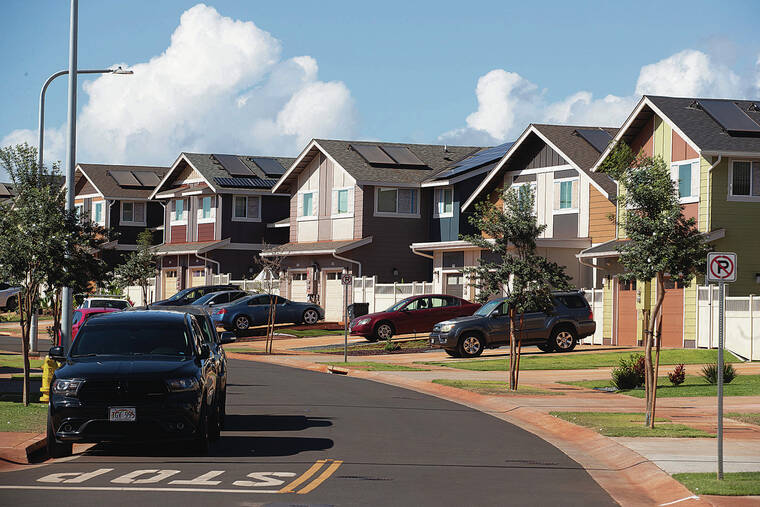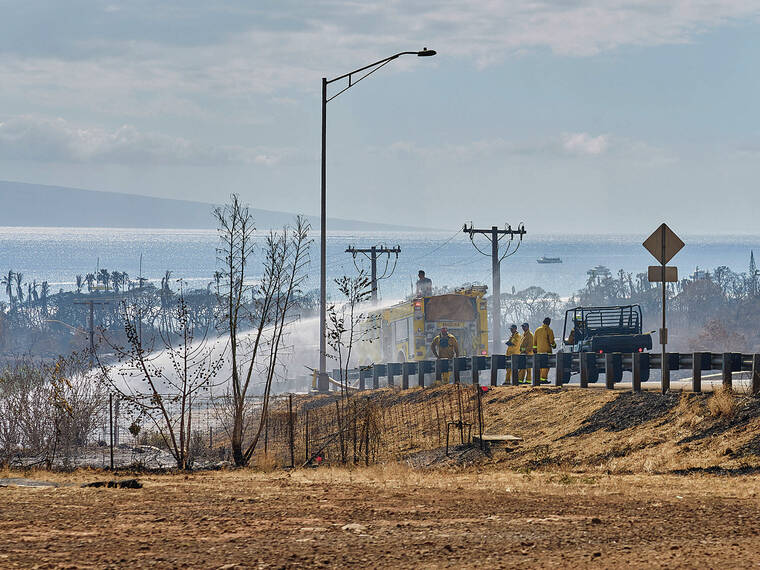Department of Planning and Permitting hopes to address delays for Oahu solar permits

GEORGE F. LEE / GLEE@STARADVERTISER.COM
Homes with solar water heaters and photovoltaic solar panels are seen Friday at the Koa Ridge development in Waipio.
The Department of Planning and Permitting is working to address a backlog in processing applications for permits for photovoltaic solar projects, which the city attributes to an increase in demand caused by state-level decisions.
DPP Director Dean Uchida said the state’s decision to close the AES Hawaii coal power plant in West Oahu has led to an increase in the number of large projects requiring permits, and the permitting process for large projects is more complicated than for single residences.
“This need to permit the large-scale solar facilities came out of the blue. There was no coordination or communication with us at all,” Uchida told the Honolulu City Council Zoning and Planning Committee on Thursday.
Another factor that Uchida said is contributing to the delay in processing of permits is the Hawaii Public Utilities Commission’s decision to approve a “battery bonus program,” which allows Hawaiian Electric Co. customers to be paid when they add their stored solar power to the grid. The move was meant to boost the amount of clean energy to prepare for the closure of the coal plant by September.
“We’re trying to clear them (permit applications) out as best we can, but … these decisions are being made that drive up demand without involving us,” Uchida said. “Unfortunately, we take the brunt of the criticisms for why the permits aren’t being processed fast enough, but we had no ability to prepare for the push for the large-scale solar or the battery bonus program.”
Most single-family residential project applications can be submitted through DPP’s online portal, and a permit quickly granted. But permit applications that are flagged can take much longer to process. Applications can be flagged for further evaluation by the department for many reasons, such as the property being in a flood zone, or shoreline issues.
Don't miss out on what's happening!
Stay in touch with breaking news, as it happens, conveniently in your email inbox. It's FREE!
According to DPP, there are currently 49 permits that were submitted online that are awaiting processing.
However, Hawaii Solar Energy Association Executive Director Rocky Mould said he does not think DPP’s figure properly represents the number of permits stuck in the department’s E-Plans Division.
“We’re seeing literally hundreds since Jan. 1 of single- family residential E-Plan applications that are stuck,” Mould said. “We’re not even sure if they’ve been initially looked at yet.”
Most industry professionals who think an application will get flagged online take it into the department to be processed manually, Mould said. He estimated that the backlog including the applications that were walked in is about 400. “They don’t even bother putting it through an online permit,” Mould said. “They go straight to the E-Plans now.”
DPP did not clarify whether its count of 49 permit applications included any that were walked in.
Mould thinks delays can be avoided if the department loosens its criteria for flagging properties. For example, there is a zoning code that includes multiple residences within one large tax map key.
“Because they are multiple residences under one TMK, those get flagged,” Mould said.
“That’s a specific one that we’ve really highlighted as the one that we think will do the most progress on single-family home applications.”
This specific situation affects new developments such as Hoopili and Koa Ridge, which Mould said make up large amounts of the solar industry’s residential market.
Since January, DPP has approved 1,350 single-family residential solar permits.
Uchida is also working on addressing the backlog of general permit applications. The department will put out a request for proposals for modernizing its online permitting system.
However, Uchida added that while delays can be attributed to the department, it is often the applicants incorrectly filling out the applications. Council member Brandon Elefante suggested that it would be helpful to have an informational briefing in the future about the permit application process to help the public understand it better.




